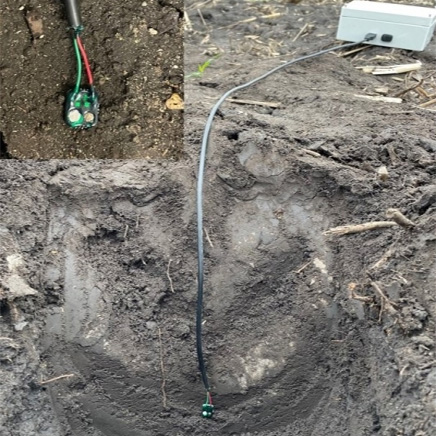Our civilization depends on continuously increasing levels of agricultural productivity, which itself depends on (among other things) the interplay of crop varieties and the environments in which these varieties are grown. Hence, to increase agricultural productivity and yield stability, it is necessary to develop improved crop varieties that deliver ever more yield, even under the variable weather conditions induced by global climate change, all the while minimizing the use of inputs such as fertilizers that are limiting, expensive or have undesirable ecological impacts. By coupling a network of innovative, low-cost nitrate sensors across multiple environments within the heart of the corn belt and advanced cropping systems modeling (APSIM, the most widely used modeling platform), the proposed research will enhance our understanding of and ability to predict yield and Genotype x Environment interactions. The integration of nitrate (N) dynamics into this model is expected to greatly increase the accuracy of its predictions. Because we will also integrate genotypes into this model, the proposed research outlines a new and innovative approach for breeding crops that exhibit increased yields and yield stability. It will be possible to readily translate this approach to other crops. By generating data on nitrate concentrations in soil and in planta at unprecedented spatial and temporal resolution at multiple sites with different soil characteristics and weather, the proposed research will also improve our understanding of N cycles in both the soil and plant. Although essential to plant growth and high yields, when over-applied N can result in a variety of serious negative externalities, some of which are currently the subject of high-impact litigation in Iowa. Project outcomes have the potential to provide guidance to farmers about how to apply sufficient but not excessive amounts of N fertilizer, resulting in both economic benefits to farmers and positive environmental externalities.Our focus on creating a new approach to breeding for yield stability meets the USDA sustainability goals to “satisfy human food and fiber needs” and “sustain the economic viability of farm operations”. Our focus on nitrogen meets the USDA sustainability goals to “enhance environmental quality” and to “make the most efficient use of nonrenewable resources…and integrate, where appropriate, natural biological cycles and controls”. More specifically, this proposal addresses the NIFA-Commodity Board co-funded priority for “development and application of tools to predict phenotype from genotype” and the “the development of high-throughput phenotyping equipment and methods”.
